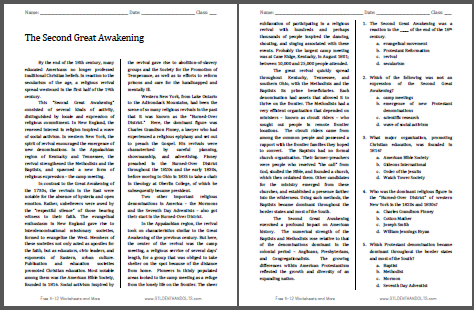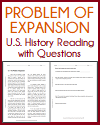| The Second Great Awakening |
 By the end of the 18th century, many educated Americans no longer professed traditional Christian beliefs. In reaction to the secularism of the age, a religious revival spread westward in the first half of the 19th century. By the end of the 18th century, many educated Americans no longer professed traditional Christian beliefs. In reaction to the secularism of the age, a religious revival spread westward in the first half of the 19th century.This "Second Great Awakening" consisted of several kinds of activity, distinguished by locale and expression of religious commitment. In New England, the renewed interest in religion inspired a wave of social activism. In western New York, the spirit of revival encouraged the emergence of new denominations. In the Appalachian region of Kentucky and Tennessee, the revival strengthened the Methodists and the Baptists, and spawned a new form of religious expression – the camp meeting... Questions with answers in bold: 1. The Second Great Awakening was a reaction to the _____ of the end of the 18th century. a. evangelical movement b. Protestant Reformation c. revival d. secularism 2. Which of the following was not an expression of the Second Great Awakening? a. camp meetings b. emergence of new Protestant denominations c. scientific research d. wave of social activism 3. What major organization, promoting Christian education, was founded in 1816? a. American Bible Society b. Gideons International c. Order of the Jesuits d. Watch Tower Society 4. Who was the dominant religious figure in the “Burned-Over District” of western New York in the 1820s and 1830s? a. Charles Grandison Finney b. Cotton Mather c. Joseph Smith d. William Jennings Bryan 5. Which Protestant denomination became dominant throughout the border states and most of the South? a. Baptist b. Methodist c. Mormon d. Seventh Day Adventist |
| Click here to print. |
 |
|---|
Text courtesy of the U.S. State Department, Bureau of International Information Programs, 2005 |










